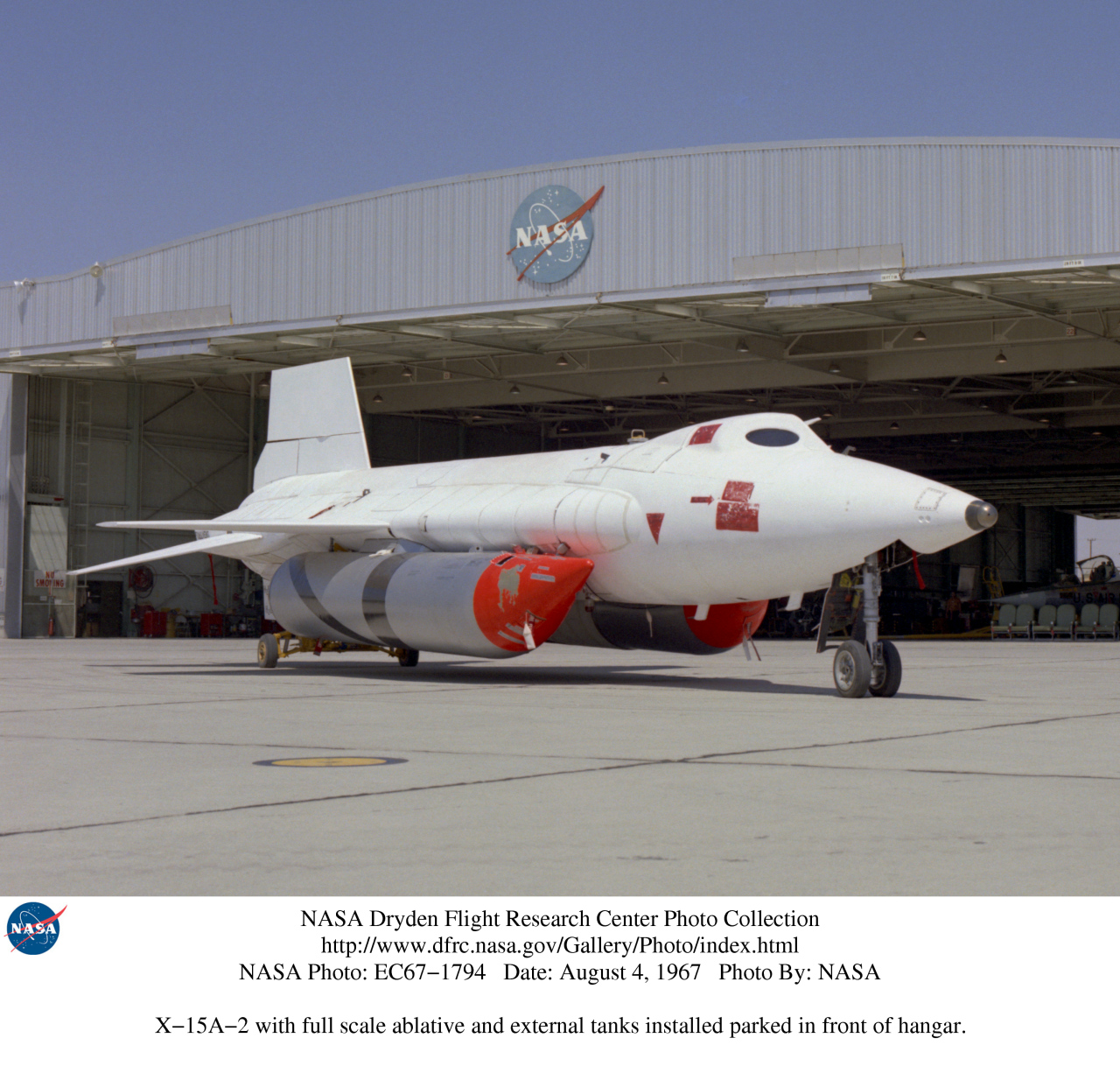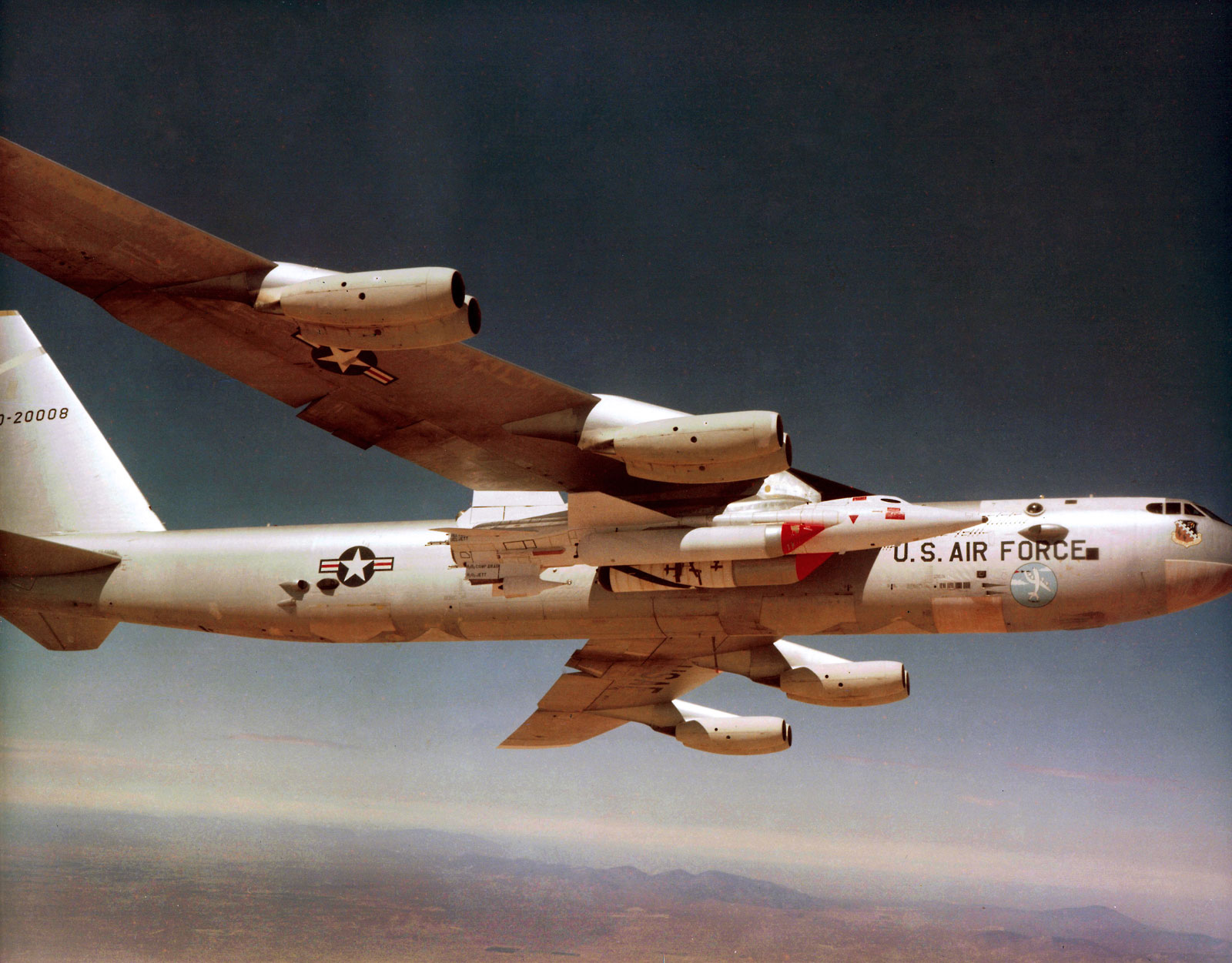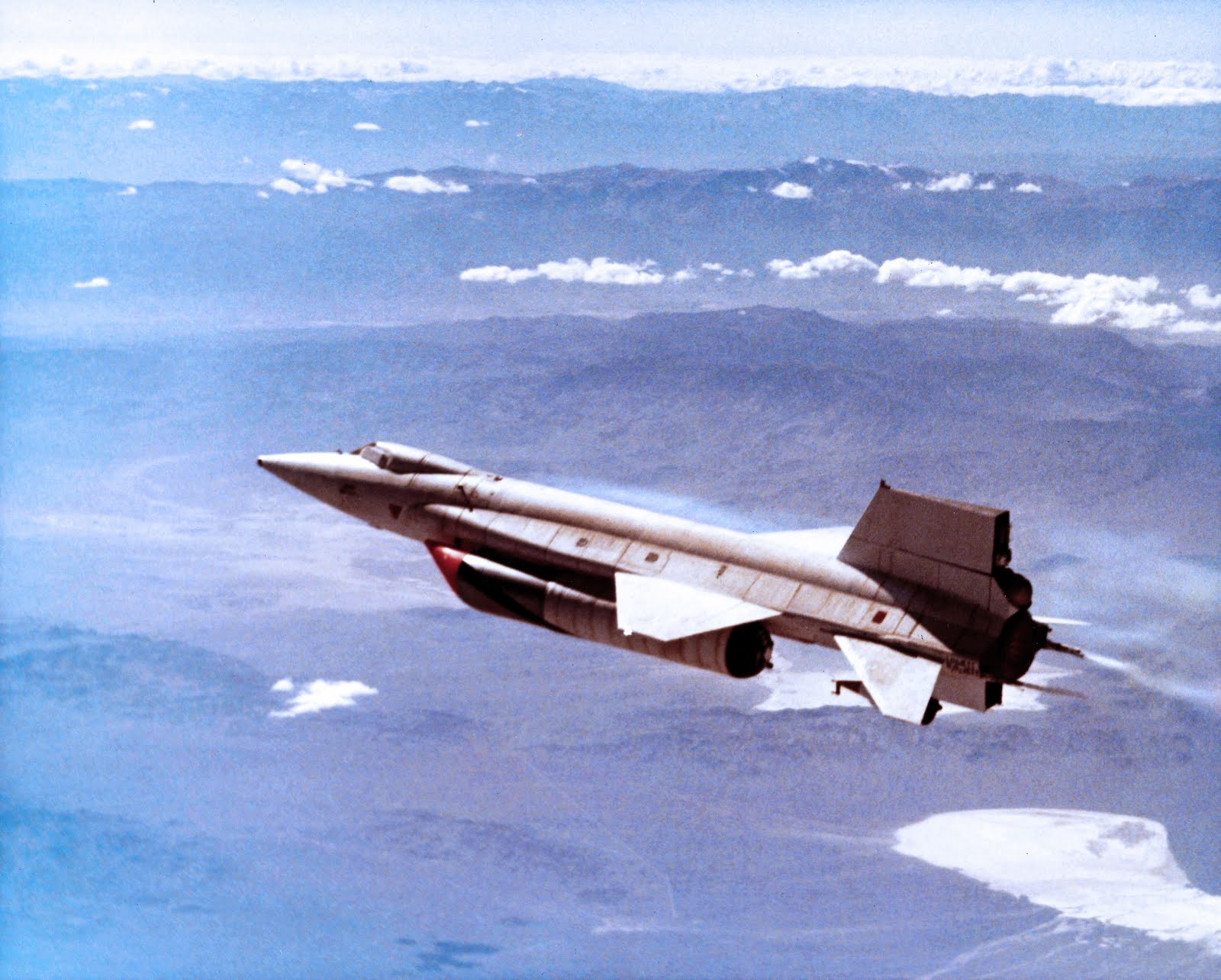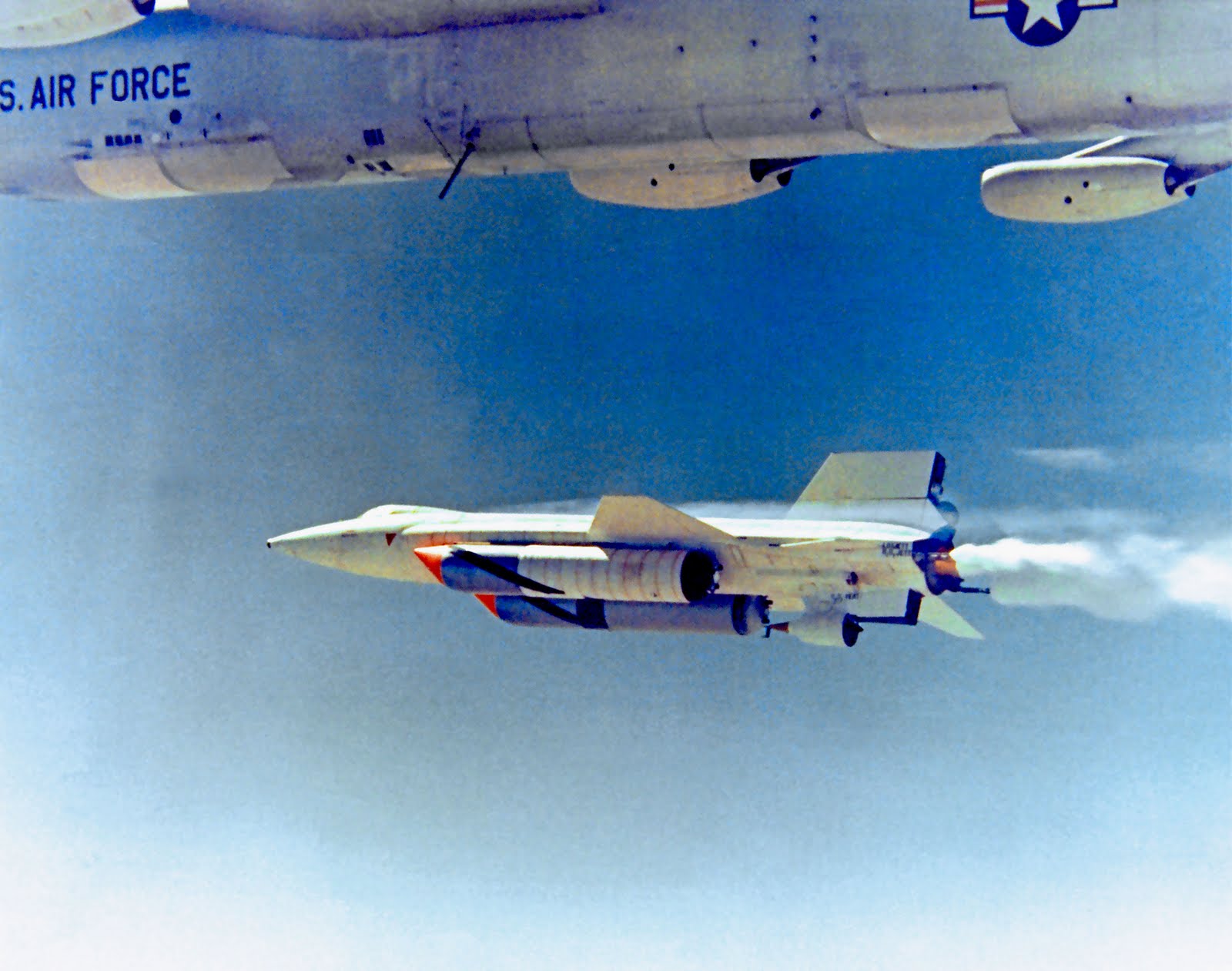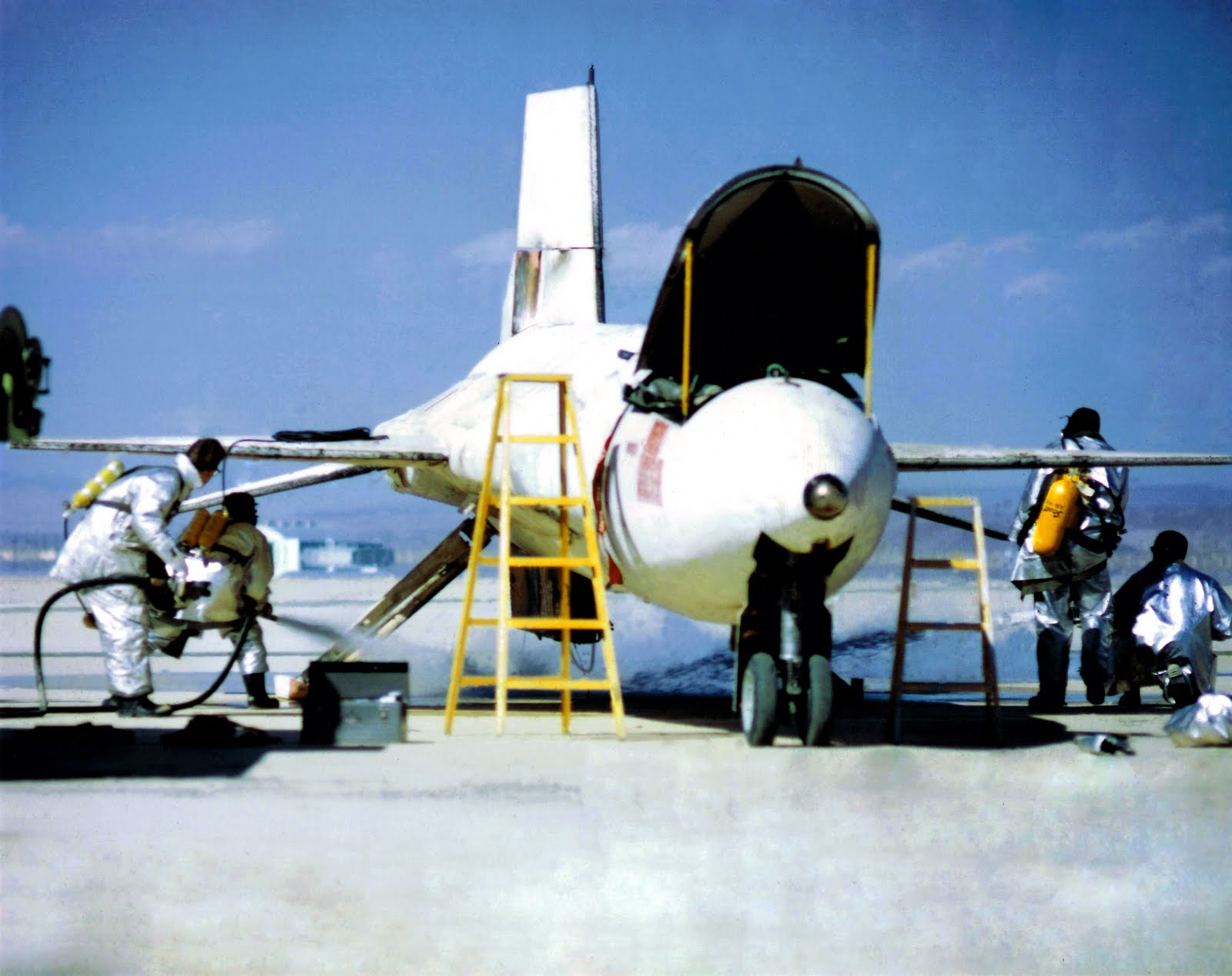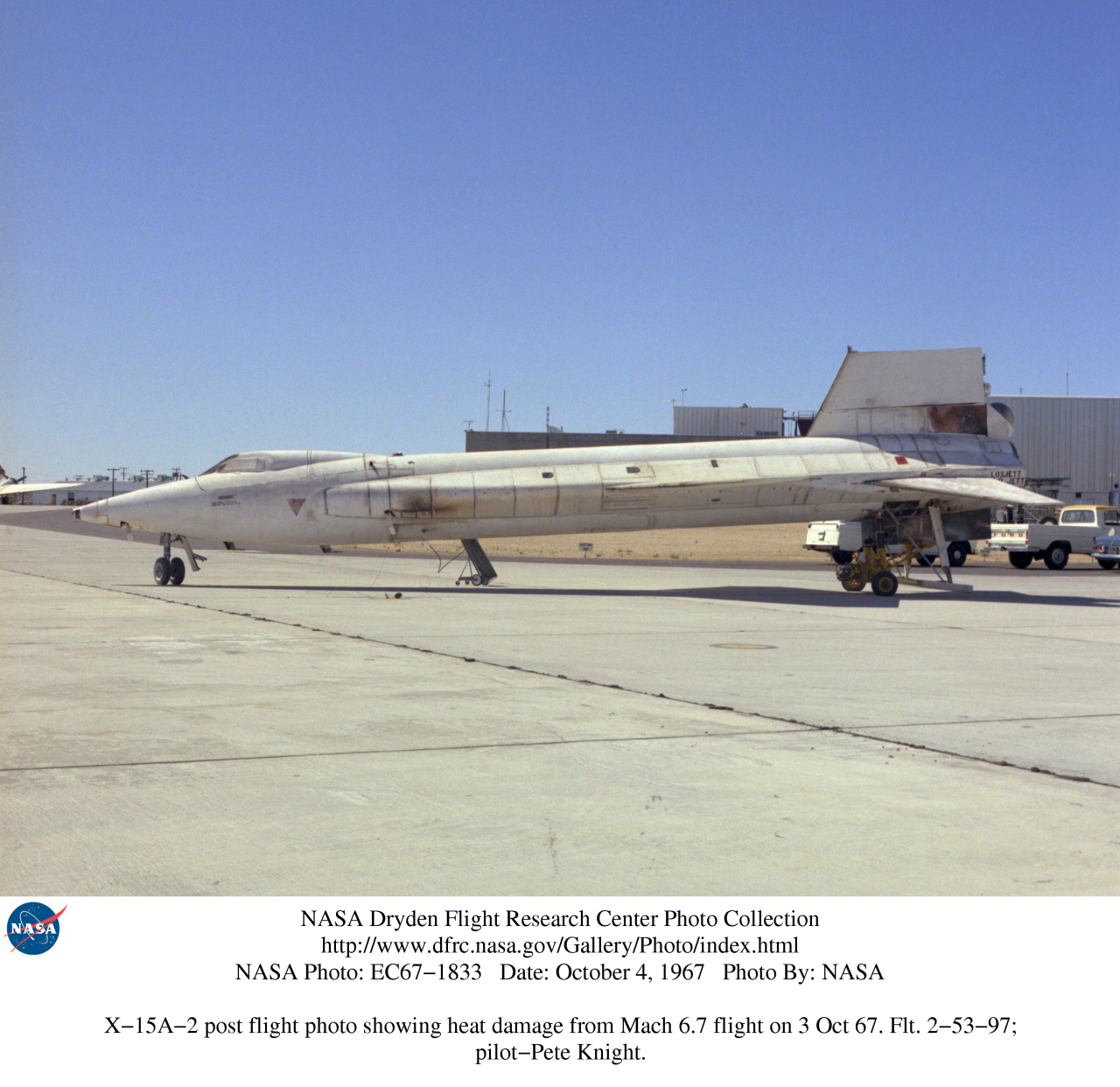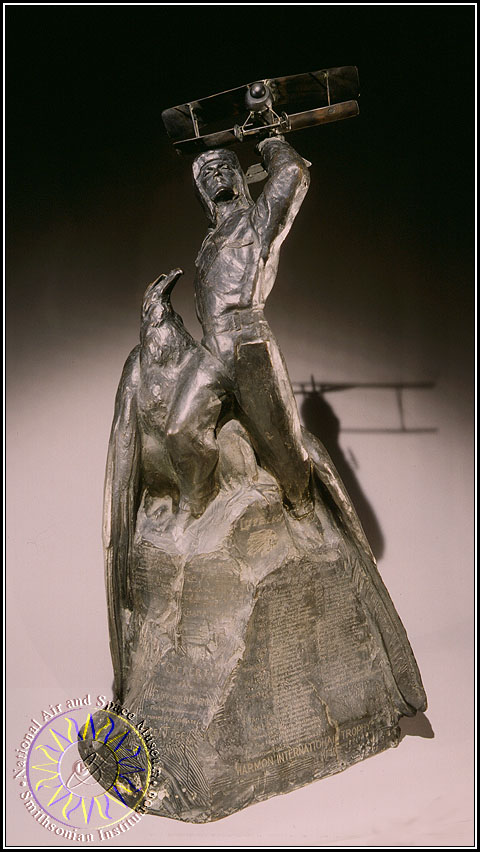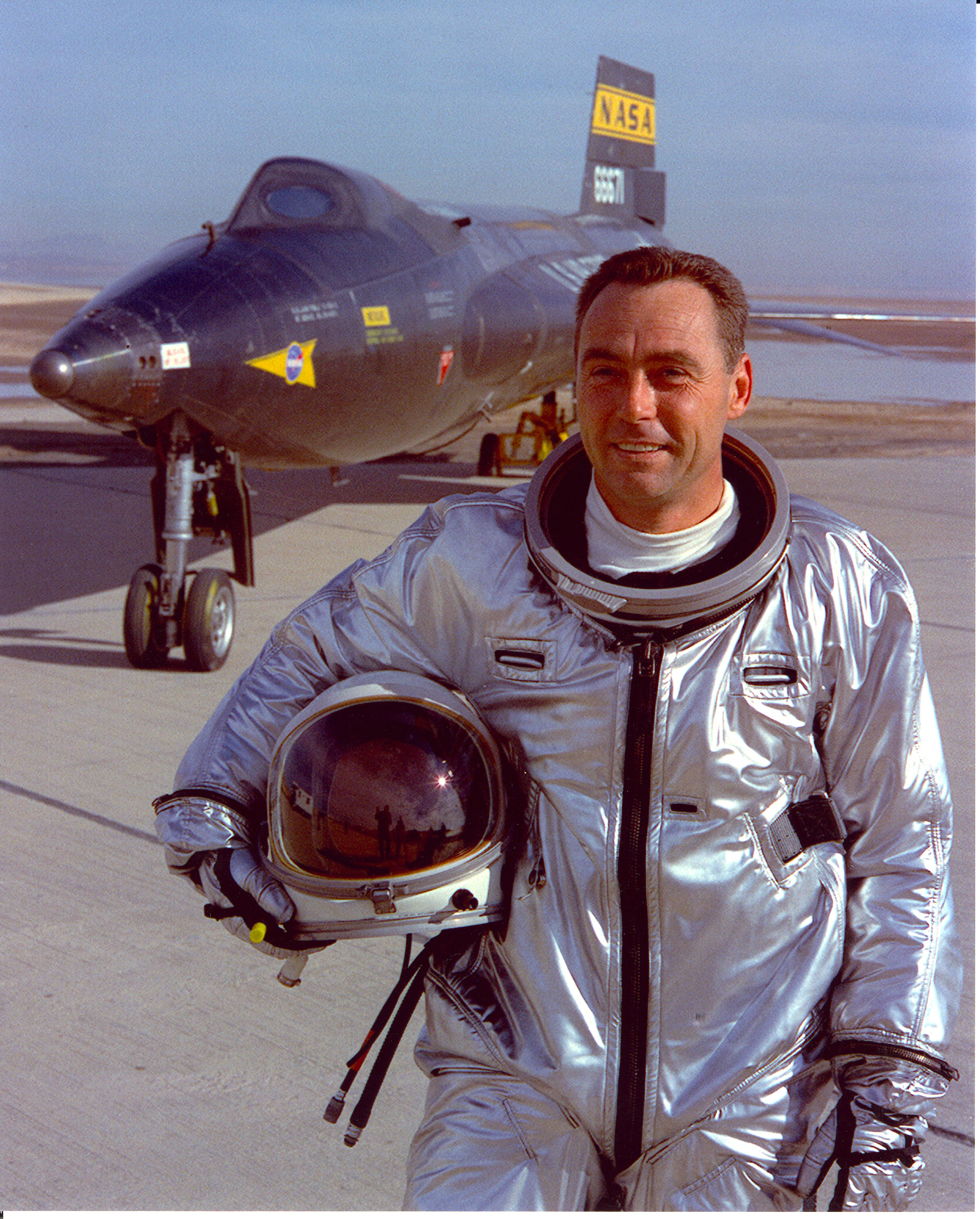
 18 November 1966: On Flight 175 of the research program, Major William J. (“Pete”) Knight, U.S. Air Force, flew the newly-modified North American Aviation X-15A-2, 56-6671, to Mach 6.33 (4,261 miles per hour/6,857 kilometers per hour) at 98,900 feet (30,245 meters). This is just 11 years, to the day, since Pete Everest made the first powered flight in the Bell Aircraft Corporation X-2 rocketplane, with more than 6 times an increase in speed.
18 November 1966: On Flight 175 of the research program, Major William J. (“Pete”) Knight, U.S. Air Force, flew the newly-modified North American Aviation X-15A-2, 56-6671, to Mach 6.33 (4,261 miles per hour/6,857 kilometers per hour) at 98,900 feet (30,245 meters). This is just 11 years, to the day, since Pete Everest made the first powered flight in the Bell Aircraft Corporation X-2 rocketplane, with more than 6 times an increase in speed.
On this date, NASA made an attempt to launch two X-15s, -671 and -672, using the NB-52A 52-003 and NB-52B 52-008. However -672, the number three ship, had to abort the mission.
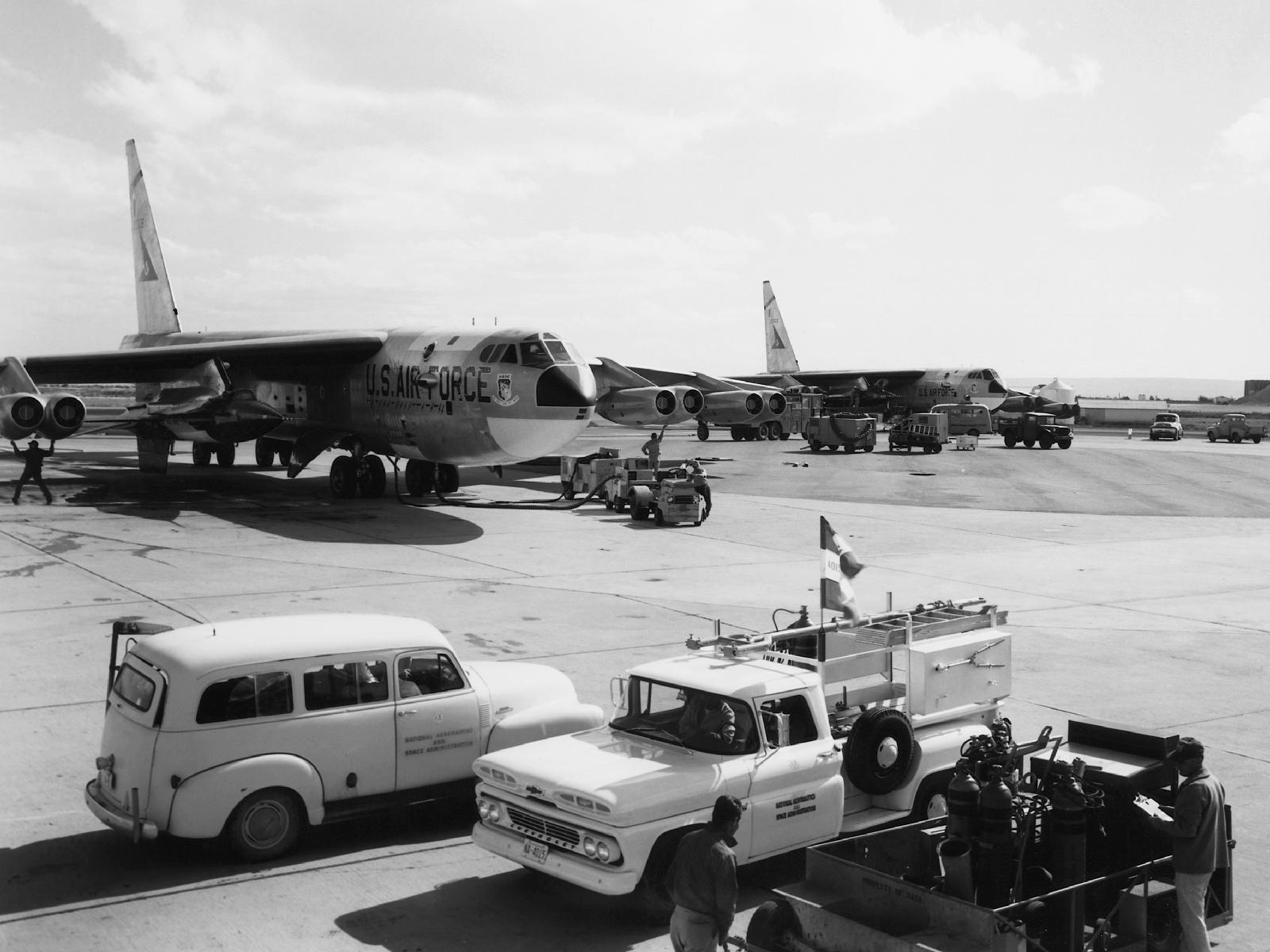
Balls 8, the NB-52B, flown by NASA test pilot Fitz Fulton and Colonel Joe Cotton, USAF, carried 56-6671 to the launch point over Mud Lake, Nevada, approximately 200 miles to the north of Edwards AFB. (This was the lake where -671 was severely damaged in an emergency landing, 9 November 1962. It was returned to North American to be rebuilt to the X-15A-2 configuration and returned to flight operation 19 months later.)
At 1:24:07.2 p.m. local time, Pete Knight and the X-15 were dropped from the pylon under the right wing of the B-52. He ignited the Reaction Motors XLR99-RM-1 and began to accelerate with its 57,000 pounds of thrust (253.549 kilonewtons).
Since this was to be a high temperature test flight, it was planned to fly no higher than 100,000 feet (30,480 meters). The denser atmosphere would result in greater aerodynamic heating of the rocketplane.
With the two external propellant tanks carrying an additional 1,800 gallons (6,814 liters) of liquid ammonia and liquid oxygen, the engine ran for 2 minutes, 16.4 seconds. The rocketplane had accelerated to Mach 2. The external tanks emptied in about 60 seconds and were jettisoned. The tanks were equipped with parachutes. They were recovered to be reused on later flights.
The X-15, now about 25,000 pounds (11,340 kilograms) lighter and without the aerodynamic drag of the tanks, continued to accelerate. At its highest speed, the rocketplane was travelling approximately 6,500 feet per second (1,981 meters per second), more than twice as fast as a high-powered rifle bullet. Its surface temperatures exceeded 1,200 °F. (649 °C.)
Knight landed the X-15 on Rogers Dry Lake at Edwards Air Force Base. The duration of this flight had been 8 minutes, 26.8 seconds.
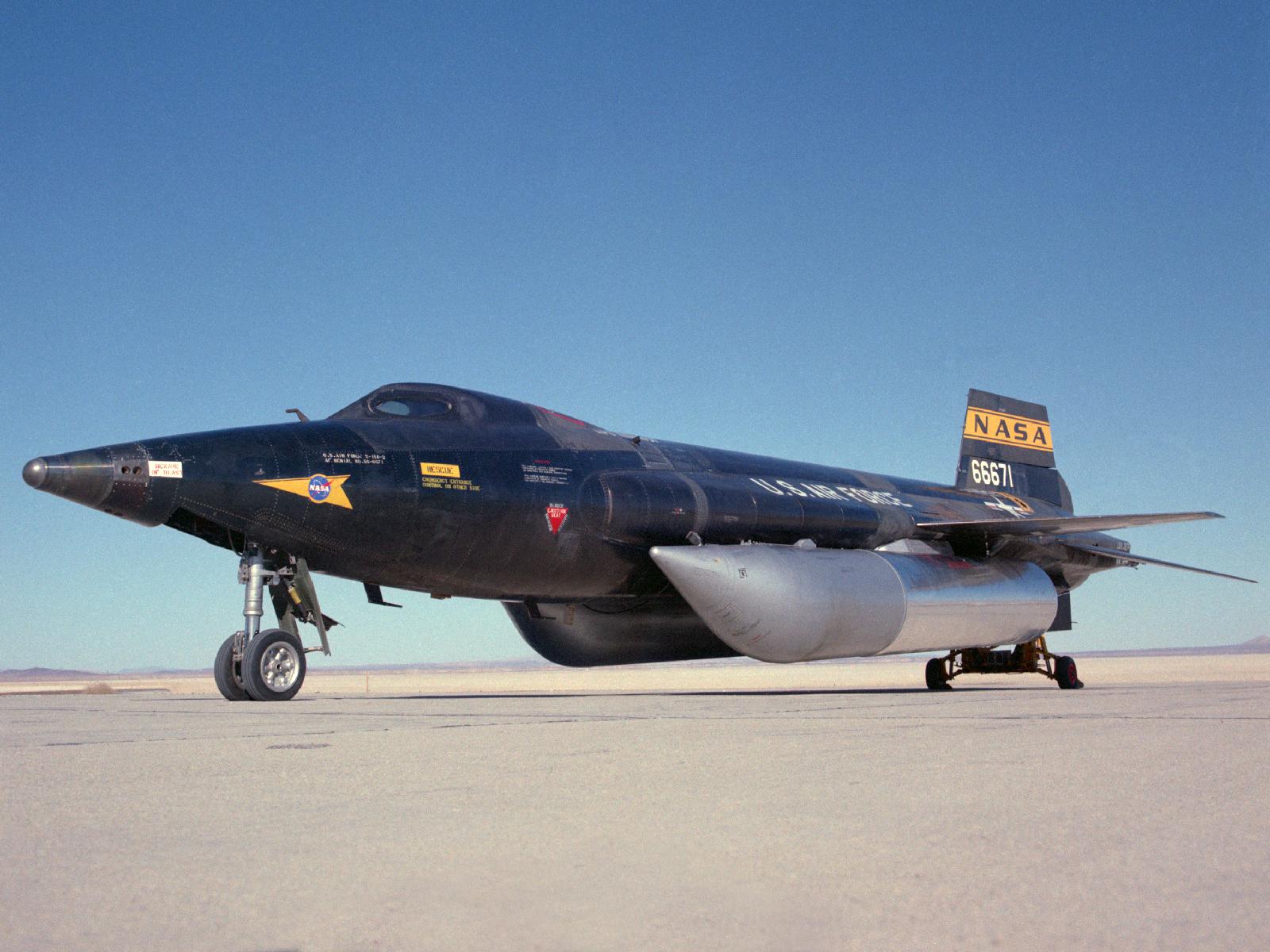
© 2016, Bryan R. Swopes

